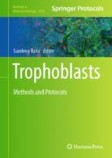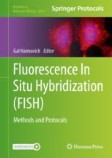Search
Search Results
-
Split-Luciferase Complementation for Analysis of Virus–Host Protein Interactions
Productive viral infection entails highly regulated and sequential protein–protein interactions between viral factors and between virus and host...
-
Detecting Protein–Protein Interactions Using Bimolecular Fluorescence Complementation (BiFC) and Luciferase Complementation Assays (LCA)
In multicellular organisms, establishing the full body plane involves cell-cell signaling where protein associations are important for the diverse...
-
A self-assembling split Nano luciferase-based assay for investigating Pseudomonas syringae effector secretion
Many Gram-negative pathogens employ the type III secretion system (T3SS) to deliver effector proteins into host cells, thereby modulating host...

-
Split luciferase-based assay to detect botulinum neurotoxins using hiPSC-derived motor neurons
Botulinum neurotoxins (BoNTs) have been widely used clinically as a muscle relaxant. These toxins target motor neurons and cleave proteins essential...

-
Analyzing Trophoblast Fusion Using Immunofluorescence and Split Protein Complementation Assays
The fusion of cytotrophoblasts into a multinucleated syncytiotrophoblast is essential for placental development. For studies investigating...
-
Split complementation of base editors to minimize off-target edits
Base editors (BEs) empower the efficient installation of beneficial or corrective point mutations in crop and human genomes. However, conventional...

-
Analysis of RAS and drug induced homo- and heterodimerization of RAF and KSR1 proteins in living cells using split Nanoluc luciferase
The dimerization of RAF kinases represents a key event in their activation cycle and in RAS/ERK pathway activation. Genetic, biochemical and...

-
CRISPR-Based Split Luciferase as a Biosensor for Unique DNA Sequences In Situ
To date, CRISPR-based DNA targeting approaches have typically used fusion proteins between full fluorescent reporters and catalytically inactive Cas9...
-
Firefly Luciferase Complementation-Based Analysis of Dynamic Protein-Protein Interactions Under Diurnal and Circadian Conditions in Arabidopsis
Split firefly luciferase complementation assay (FLCA) is one of the most widely used sensitive and reliable methods for the analysis of constitutive...
-
Quantitative Determination and Imaging of Gαq Signaling in Live Cells via Split-Luciferase Complementation
G Protein-coupled receptors (GPCRs) transduce signals elicited by bioactive chemical agents (ligands), such as hormones, neurotransmitters, or...
-
Luciferase Complementation Approaches to Measure GPCR Signaling Kinetics and Bias
An understanding of the kinetic contributions to G protein-coupled receptor pharmacology and signaling is increasingly important in compound...
-
Delivered complementation in planta (DCIP) enables measurement of peptide-mediated protein delivery efficiency in plants
Using a fluorescence complementation assay, Delivered Complementation in Planta (DCIP), we demonstrate cell-penetrating peptide-mediated cytosolic...

-
Monitoring Hippo Signaling Pathway Activity Using a Luciferase-Based Large Tumor Suppressor (LATS) Biosensor
Kinase cascades are a fundamental feature of cellular signaling and play a vital role in disease progression. Thus, tools to monitor the activity of...
-
Luciferase- and HaloTag-based reporter assays to measure small-molecule-induced degradation pathway in living cells
The rational development of small-molecule degraders (e.g., proteolysis targeting chimeras) remains a challenge as the rate-limiting steps that...

-
Bioluminescence-Based Complementation Assay to Correlate Conformational Changes in Membrane-Bound Complexes with Enzymatic Function
The proteomics field has undergone tremendous development with the introduction of many innovative methods for the identification and...
-
Analyzing Protein–Protein Interactions Using the Split-Ubiquitin System
The split-ubiquitin technology was developed over 20 years ago as an alternative to Gal4-based, yeast-two-hybrid methods to identify interacting...
-
Analysis of SPI-1 Dependent Type III Secretion and Injection Using a NanoLuc Luciferase-Based Assay
Studies of bacterial protein secretion have relied on a variety of reporters that allow the tracking of secreted proteins. However, the lack of truly...
-
Irreversible light-activated SpyLigation mediates split-protein assembly in 4D
The conditional assembly of split-protein pairs to modulate biological activity is commonly achieved by fusing split-protein fragments to dimerizing...

-
Dimerization of the 4Ig isoform of B7-H3 in tumor cells mediates enhanced proliferation and tumorigenic signaling
B7-H3 ( CD276 ) has two isoforms (2Ig and 4Ig), no confirmed cognate receptor, and physiological functions that remain elusive. While differentially...

-
Identification of nuclear membrane SUN proteins and components associated with wheat fungal stress responses
In eukaryotes, the nuclear membrane that encapsulates genomic DNA is composed of an inner nuclear membrane (INM), an outer nuclear membrane (ONM),...

